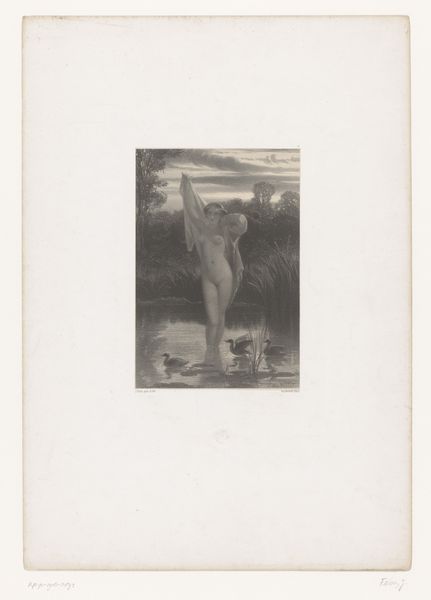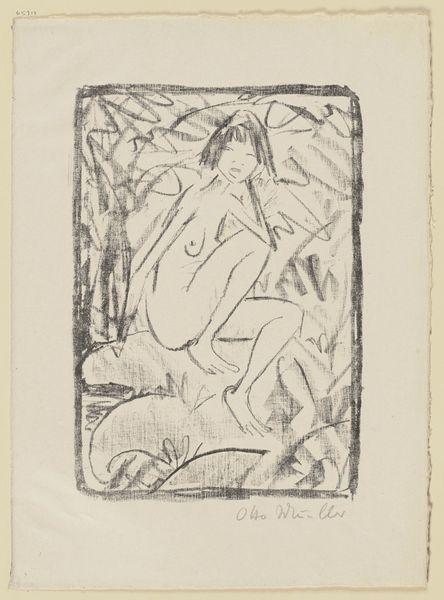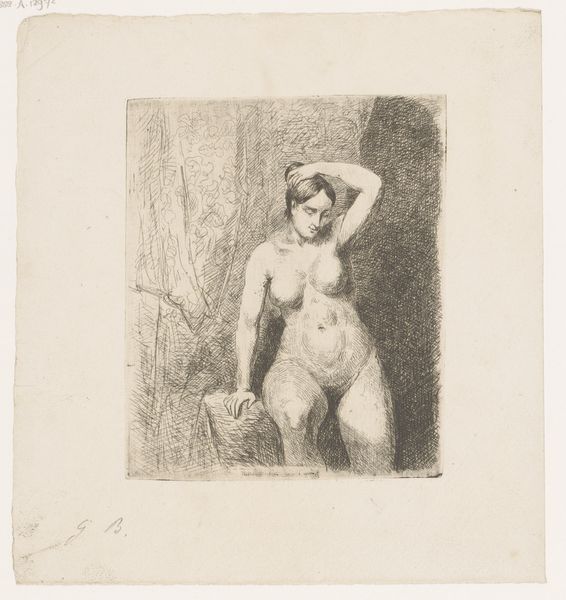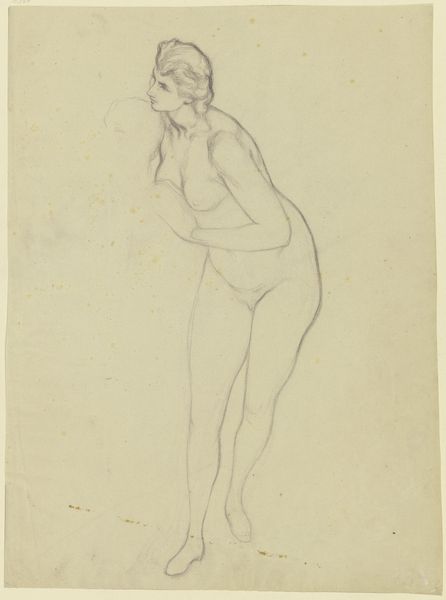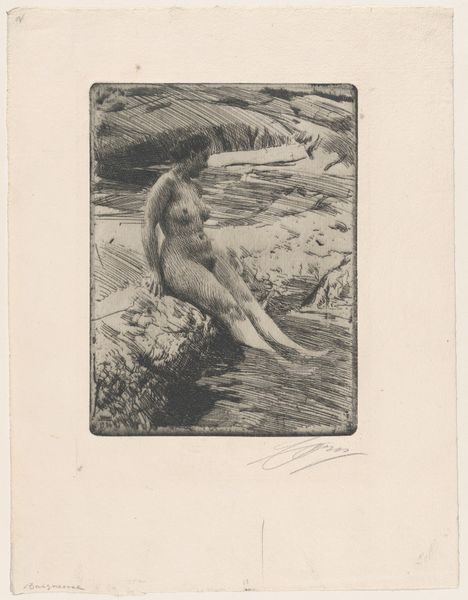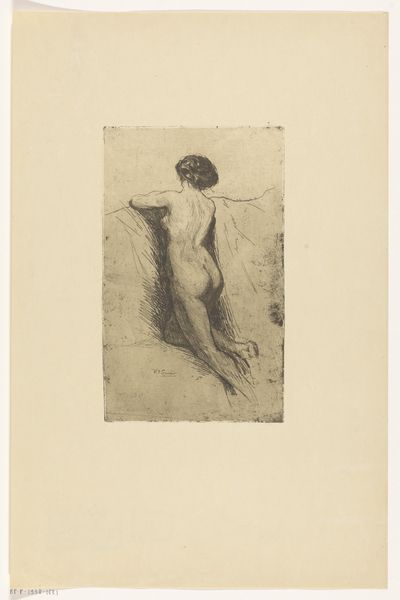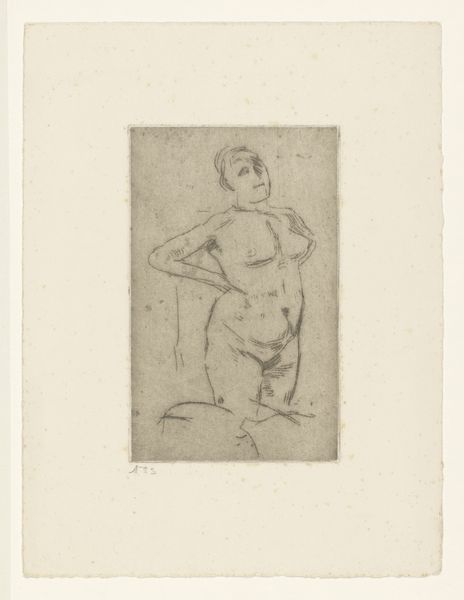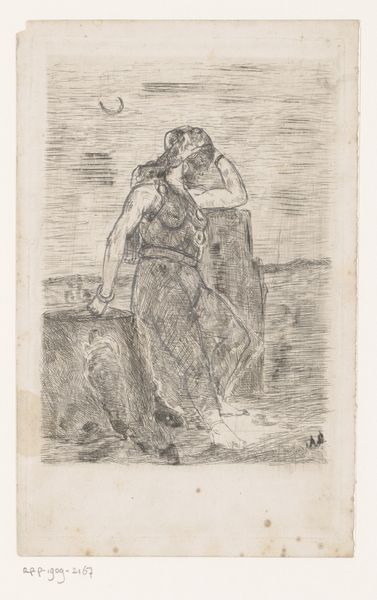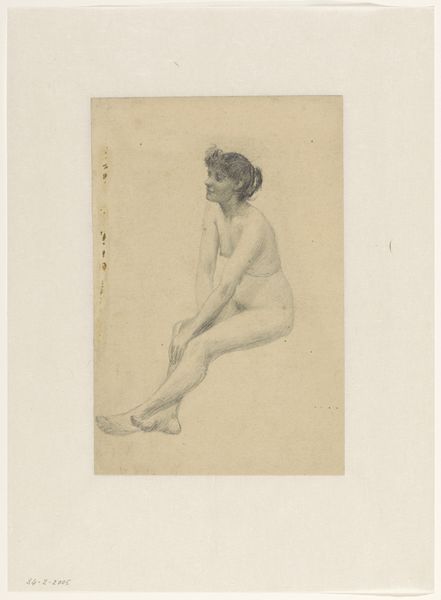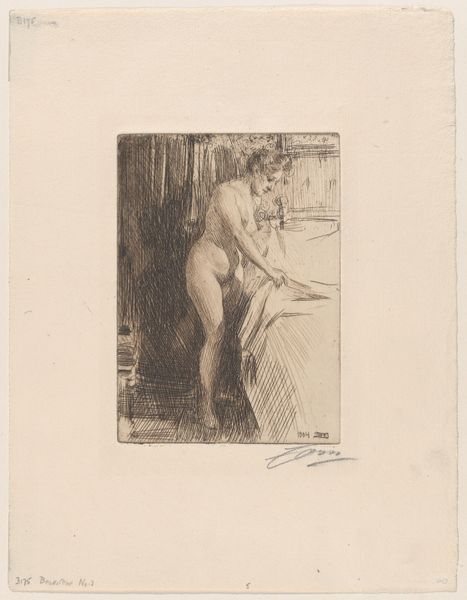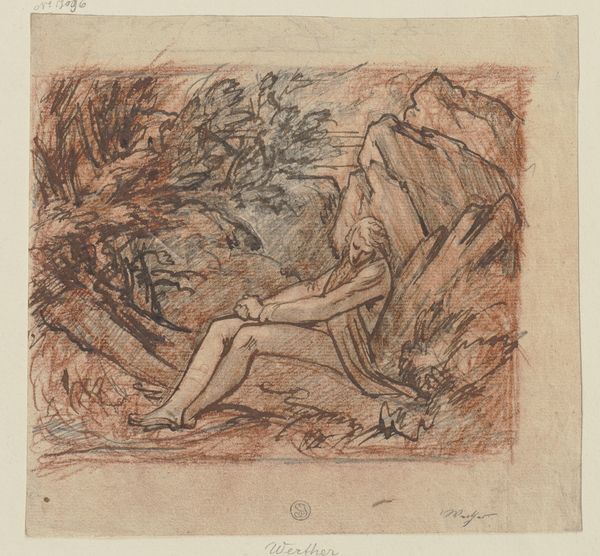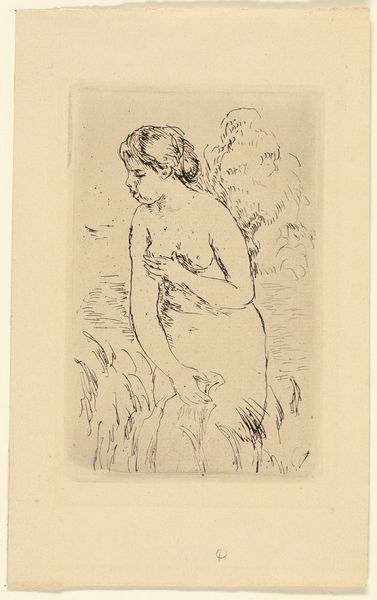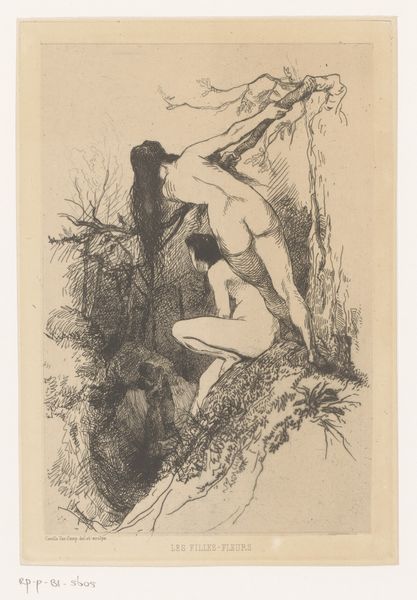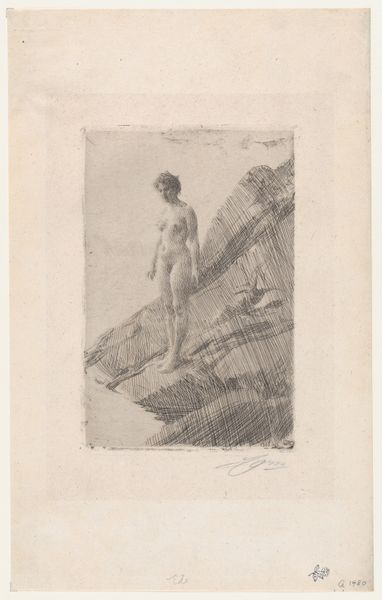
drawing, pencil
#
drawing
#
impressionism
#
pencil sketch
#
landscape
#
figuration
#
pencil
#
nude
Dimensions: height 234 mm, width 184 mm
Copyright: Rijks Museum: Open Domain
Curator: What a delicate drawing! The soft pencil work gives it an ethereal quality. Editor: It's interesting how this "Eva Leaning Against a Tree" by Charles Maurin, created sometime between 1866 and 1914, evokes the biblical Eve. The landscape becomes a metaphorical Garden of Eden. But consider this representation—nude, passively posed; isn't this another instance of the female form being framed for male consumption? Curator: Perhaps. Yet, what intrigues me is the physical labor embedded within even a seemingly simple drawing. Look at the density of the pencil strokes, particularly around the tree. What kind of pencil would Maurin have used? Where was the paper sourced? These are details easily overlooked, but crucial to understanding the work’s making. Editor: Good point. But the very notion of an "Eva" points towards power dynamics in art history. The nude figure becomes an object of spectacle, complicit in societal gender expectations. Also, the fact that it’s only a sketch may signify a quick rendering that's divorced from longer social critique or perhaps, an art that speaks through brevity. Curator: Or, maybe the medium reflects accessibility and economy. Pencil and paper would have been readily available compared to, say, oil paints and canvas, thereby affecting Maurin's approach to art-making and allowing for greater spontaneity. The looseness of the Impressionist style feels pertinent here. Editor: True, and that very accessibility potentially opens up spaces for alternative narratives or resistance. Where do we place her within emerging feminist narratives in art or sociopolitical power struggles around the end of the 19th century? Curator: Right. Ultimately, examining the pencil itself alongside gendered representation enriches the experience. Understanding art as not only image but object enmeshed in its time makes all the difference. Editor: Yes, unpacking the intertwined stories, both those embedded within the historical context and the making, allows us to find our place within and also beside this intriguing piece.
Comments
No comments
Be the first to comment and join the conversation on the ultimate creative platform.
